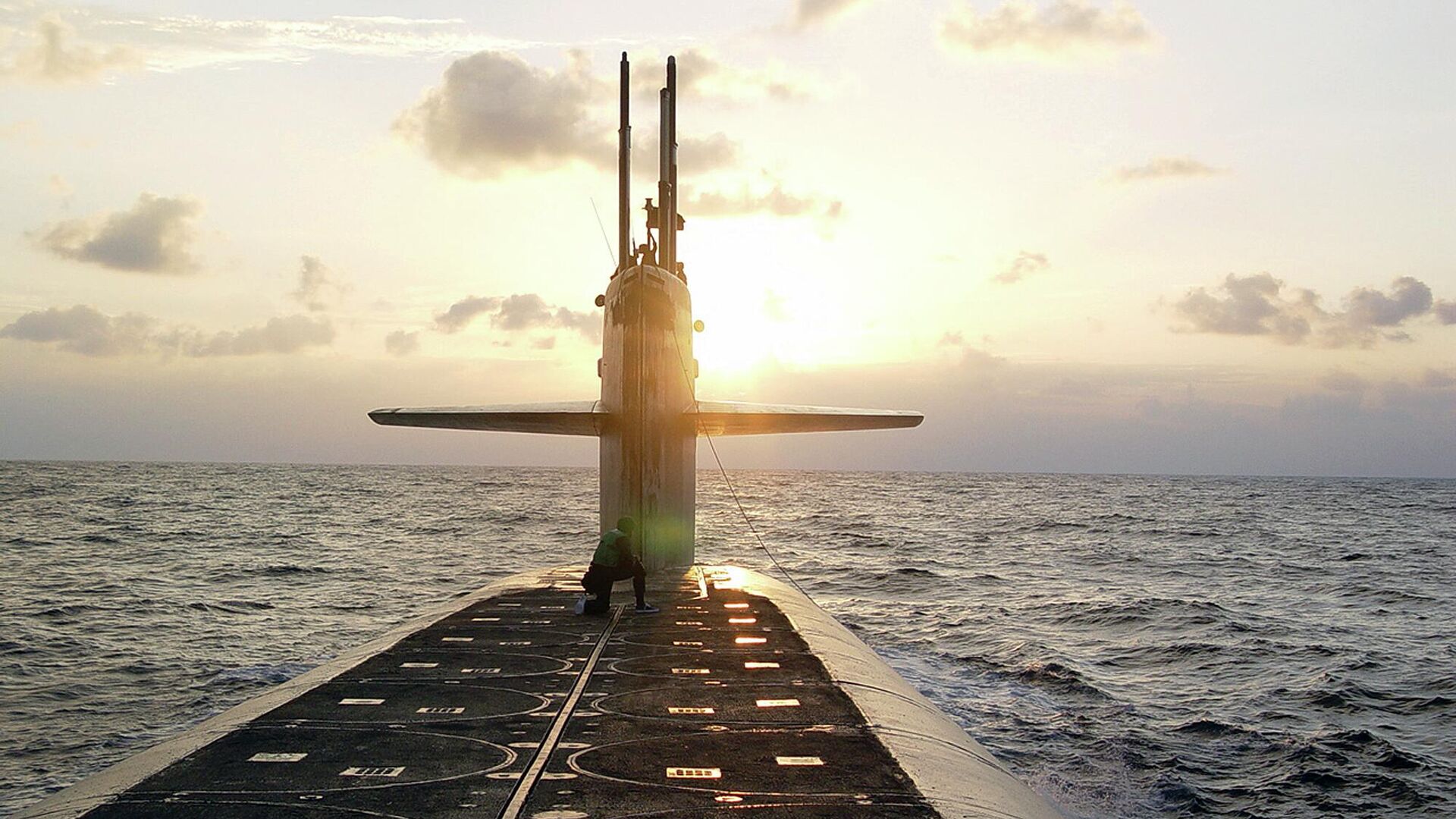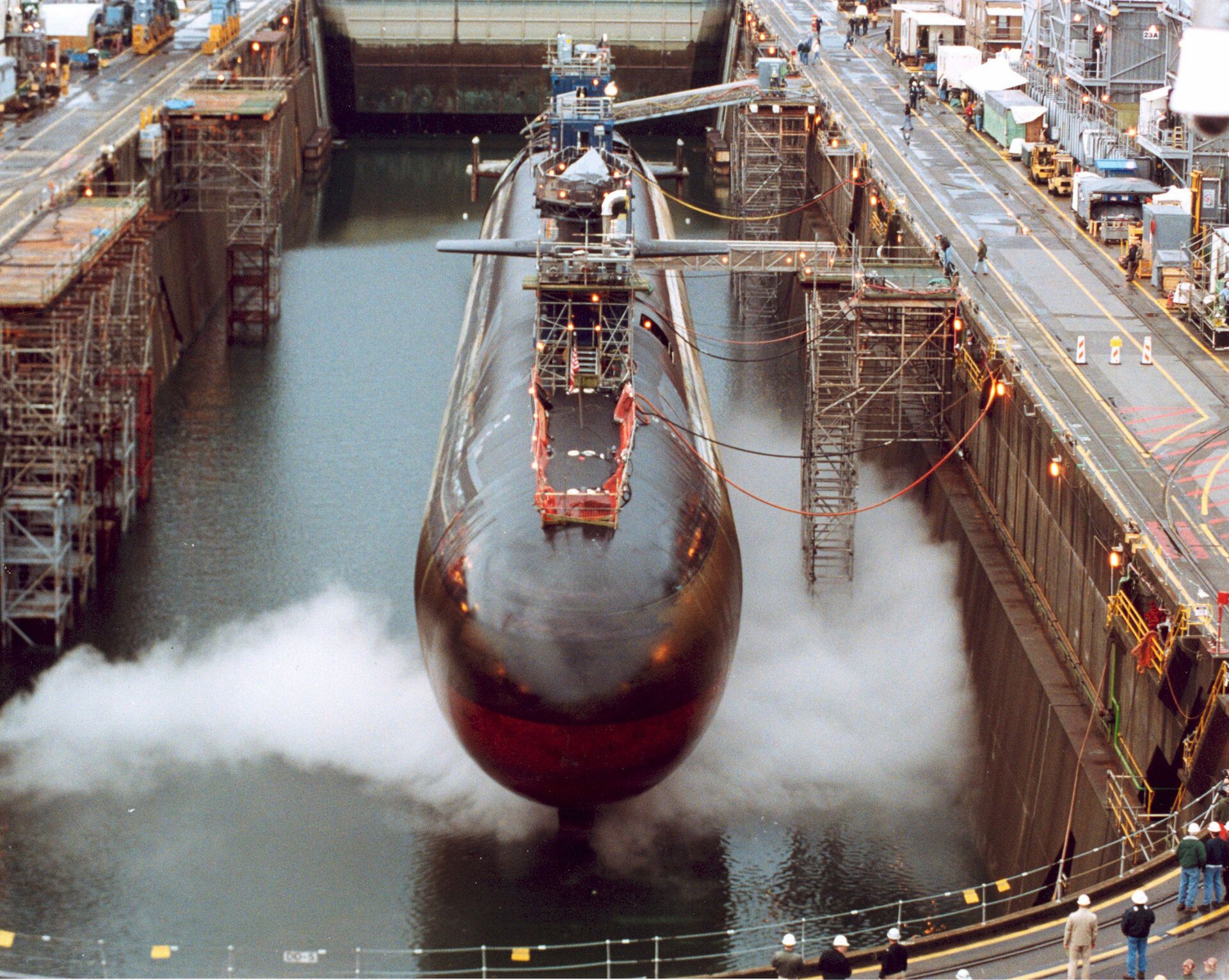https://sputnikglobe.com/20221205/how-many-nuclear-submarines-does-the-us-have-1105057400.html
How Many Nuclear Submarines Does the US Have?
How Many Nuclear Submarines Does the US Have?
Sputnik International
How many nuclear subs does the US have, and how strict are the conditions for their use under the nation’s nuclear doctrine? The short answer is: worryingly lax.
2022-12-05T13:01+0000
2022-12-05T13:01+0000
2022-12-19T15:55+0000
submarine
ohio-class
us sub
us
strategic missiles
nuclear missile
nuclear power
nuclear forces
us navy
us nuclear posture review
https://cdn1.img.sputnikglobe.com/img/07e6/08/0b/1099495217_0:0:2000:1125_1920x0_80_0_0_04a7eba3693142b900066507d93f305b.jpg
Elements of the sea-based prong of America’s strategic deterrent made the news repeatedly over the past week, with UK media reporting a doubling of sightings of US Ohio-class nuclear subs at the British Naval Base Clyde at Faslane, western Scotland in 2022, while US media detailed “a string of highly unusual public disclosures” about the movements and activities of America’s nuclear subs in East Asia, the Indian Ocean, and the Arabian Sea to send a "message" to adversaries.How Many Missile Subs Does the United States Have?54 percent of the US’ total deployed nuclear arsenal of 1,744 nukes is carried on board its missile subs. Specifically, these are the General Dynamics Electric Boat-built Ohio-class nuclear powered ballistic missile submarines (SSBNs).Built between 1976 and 1997 and commissioned through the 1980s and 1990s, the Navy’s 14 Ohio-class SSBNs constitute the entire sea-based component of America’s nuclear deterrent. The subs carry up to 24 Trident II submarine-launched ballistic missiles (SLBMs), with each missile capable of carrying nukes in the form of multiple independently targetable reentry vehicles (MIRVs). These MIRVs carry a nuclear payload ranging from five to seven kilotons (less than half the destructive power of the Hiroshima bomb) to warheads with a power of up to 475 kilotons, enough to decimate a major metropolitan area. Each Trident carries between one and 14 warheads. This means that a single Ohio-class submarine can hold up to 336 nuclear bombs – enough to single-handedly devastate any nation on Earth.What Does America’s Nuclear Doctrine Say About These Weapons’ Use?In late October, the Biden administration released its long-awaited update to the US nuclear doctrine, known as the 2022 Nuclear Posture Review. Like its predecessors, the 2022 posture allows the United States to use nuclear weapons on a preemptive basis, given the “unacceptable level of risk” of adversaries inflicting “strategic level damage” on the United States and its allies and partners if the country were to reject nuclear first use.Washington promises to use nuclear weapons only in “extreme circumstances” to defend its national interests. However, it doesn’t rule out using nukes against even “non-nuclear weapons states” if they aren’t a party to and in compliance with the Non-Proliferation Treaty. For the latter, “there remains a narrow range of contingencies in which US nuclear weapons may play a role in deterring attacks which have strategic effect,” the document warns. Non-NPT countries include India, Pakistan, Israel, South Sudan, and North Korea.The Biden Nuclear Posture Review does not reject the deployment of the W76-2 warhead – a low-yield nuke introduced in the 2018 Trump Nuclear Posture Review and deployed on board Ohio-class subs in 2019, notwithstanding the danger such a weapon poses in lowering the threshold of nuclear war. The warhead is counterintuitively described as an “important means to deter limited nuclear use” in the document.How Many Cruise Missile Subs Does the US Have?In addition to its SSBN fleet, the US Navy also operates four modified Ohio-class cruise missile submarines (SSGNs) – the USS Ohio, USS Michigan, USS Georgia, and USS Florida. The boats were converted into SSGNs in the 2000s, fitted with vertical launch systems which enable them to carry dozens of Tomahawk cruise missiles. Each of the converted boats’ 22 tubes carries up to seven Tomahawks, or 154 cruise missiles in every sub. The SSGNs can also carry special operations (spec ops) personnel for stealthy missions on distant shores.The Tomahawks on board the four Ohio-class boats can be armed with both conventional explosives and nuclear-tipped warheads, with the latter carrying a yield of between five and 150 kilotons. The Pentagon first used a converted Ohio-class SSGN in combat during the US war of aggression in Libya –with the USS Florida raining dozens of conventional Tomahawk missiles down on targets in the country in 2011 during Operation Odyssey Dawn, playing its small part in turning the once prosperous North African nation into a failed state.How Many Nuclear-Powered Attack Subs Does the US Have?In addition to its strategic nuke-launching subs and cruise missile-equipped SSGNs, the United States has over 50 fast attack subs – all of them powered by nuclear reactors. These include 29 Los Angeles-class subs, built between the early 1970s and 1996, and fitted with Mk 48 torpedoes, Harpoon anti-ship missiles, and Tomahawk land attack missiles, 22 newer Virginia-class subs, which began to be commissioned in the mid-2000s, and carrying the same armament, and three boats of the Seawolf-class, a nimble, $3 billion apiece sub, also armed with the same weapons. The Navy planned to build 29 Seawolf-class boats when construction began in the late 1980s, but scrapped 26 of them due to exorbitant costs (for comparison, a single Los Angeles-class cost about $1.61 billion in inflation-adjusted dollars).What’s Next for the US Nuclear Submarine Fleet?The Pentagon received nearly $100 million for R&D work on its next-generation nuclear attack submarine, known as the SSN(X) program, in the 2022 budget, and has requested $237 million in additional funding in fiscal year 2023. So far, the Navy has been tight-lipped about what the new sub might look like, or its capabilities, except to promise that it will have improved speed and stealth characteristics, “and carry a larger inventory of weapons and diverse payloads” compared with its predecessors. Construction of the SSN(X) is expected to start in the early 2030s, with the first boats set to come online in 2043.As for missile-carrying boomer subs, construction of the Ohio-class’ replacement – the Columbia-class, is already under way. The $9.15 billion a piece subs are set to start replacing Ohio-class boats in the late 2020s. Each will carry 16 Trident IIs. The US plans to build a dozen Columbia-class subs total, with all 12 expected to be completed by the early 2040s, and to serve until 2085, if we make it that far.
https://sputnikglobe.com/20200208/pentagon-says-new-sub-based-low-yield-nukes-could-help-us-fight-and-win-wars-1078262517.html
https://sputnikglobe.com/20200921/photos-us-navys-shy-uss-seawolf-attack-sub-spotted-again-in-scotlands-river-clyde-1080530783.html
https://sputnikglobe.com/20221205/how-many-nuclear-submarines-does-russia-have-1105034535.html
Sputnik International
feedback@sputniknews.com
+74956456601
MIA „Rossiya Segodnya“
2022
News
en_EN
Sputnik International
feedback@sputniknews.com
+74956456601
MIA „Rossiya Segodnya“
Nuclear submarine fleets of the leading countries of the world
Sputnik International
Nuclear submarine fleets of the leading countries of the world
2022-12-05T13:01+0000
true
PT3M51S
Sputnik International
feedback@sputniknews.com
+74956456601
MIA „Rossiya Segodnya“
how many nuclear subs does the us have, how many boomer subs does the us have, how many nuclear attack subs does the us have, boomer, attack sub, submarine, strategic arsenal, submarine-launched ballistic missile, tomahawk cruise missile, trident missile
how many nuclear subs does the us have, how many boomer subs does the us have, how many nuclear attack subs does the us have, boomer, attack sub, submarine, strategic arsenal, submarine-launched ballistic missile, tomahawk cruise missile, trident missile
How Many Nuclear Submarines Does the US Have?
13:01 GMT 05.12.2022 (Updated: 15:55 GMT 19.12.2022) Longread
Over half of the US’ nuclear arsenal is based on board its fleet of ballistic missile submarines, with each one having enough nuclear firepower to destroy entire nations. How many nuclear subs does the US have, and how strict are the conditions for their use under the nation’s nuclear doctrine? The short answer is: worryingly lax.
Elements of the sea-based prong of America’s strategic deterrent made the news repeatedly over the past week, with UK media reporting a
doubling of sightings of US Ohio-class nuclear subs at the British Naval Base Clyde at Faslane, western Scotland in 2022, while US media
detailed “a string of highly unusual public disclosures” about the movements and activities of America’s nuclear subs in East Asia, the Indian Ocean, and the Arabian Sea to send a "message" to adversaries.
How Many Missile Subs Does the United States Have?
54 percent of the US’ total deployed nuclear arsenal of 1,744 nukes is carried on board its missile subs. Specifically, these are the General Dynamics Electric Boat-built Ohio-class nuclear powered ballistic missile submarines (SSBNs).
Built between 1976 and 1997 and commissioned through the 1980s and 1990s, the Navy’s 14 Ohio-class SSBNs constitute the entire sea-based component of America’s nuclear deterrent. The subs carry up to 24 Trident II submarine-launched ballistic missiles (SLBMs), with each missile capable of carrying nukes in the form of multiple independently targetable reentry vehicles (MIRVs). These MIRVs carry a nuclear payload ranging from five to seven kilotons (less than half the destructive power of the Hiroshima bomb) to warheads with a power of up to 475 kilotons, enough to decimate a major metropolitan area. Each Trident carries between one and 14 warheads. This means that a single Ohio-class submarine can hold up to 336 nuclear bombs – enough to single-handedly devastate any nation on Earth.
What Does America’s Nuclear Doctrine Say About These Weapons’ Use?
In late October, the Biden administration released its long-awaited update to the US nuclear doctrine, known as the
2022 Nuclear Posture Review. Like its predecessors, the 2022 posture
allows the United States to use nuclear weapons on a preemptive basis, given the “unacceptable level of risk” of adversaries inflicting “strategic level damage” on the United States and its allies and partners if the country were to reject nuclear first use.
Washington promises to use nuclear weapons only in “extreme circumstances” to defend its national interests.
However, it doesn’t rule out using nukes against even “non-nuclear weapons states” if they aren’t a party to and in compliance with the Non-Proliferation Treaty. For the latter, “there remains a narrow range of contingencies in which US nuclear weapons may play a role in deterring attacks which have strategic effect,” the document warns. Non-NPT countries include India, Pakistan, Israel, South Sudan, and North Korea.
The Biden Nuclear Posture Review does not reject the deployment of the W76-2 warhead – a low-yield nuke introduced in the 2018 Trump Nuclear Posture Review and deployed on board Ohio-class subs in 2019, notwithstanding the danger such a weapon poses in lowering the threshold of nuclear war. The warhead is counterintuitively described as an “important means to deter limited nuclear use” in the document.
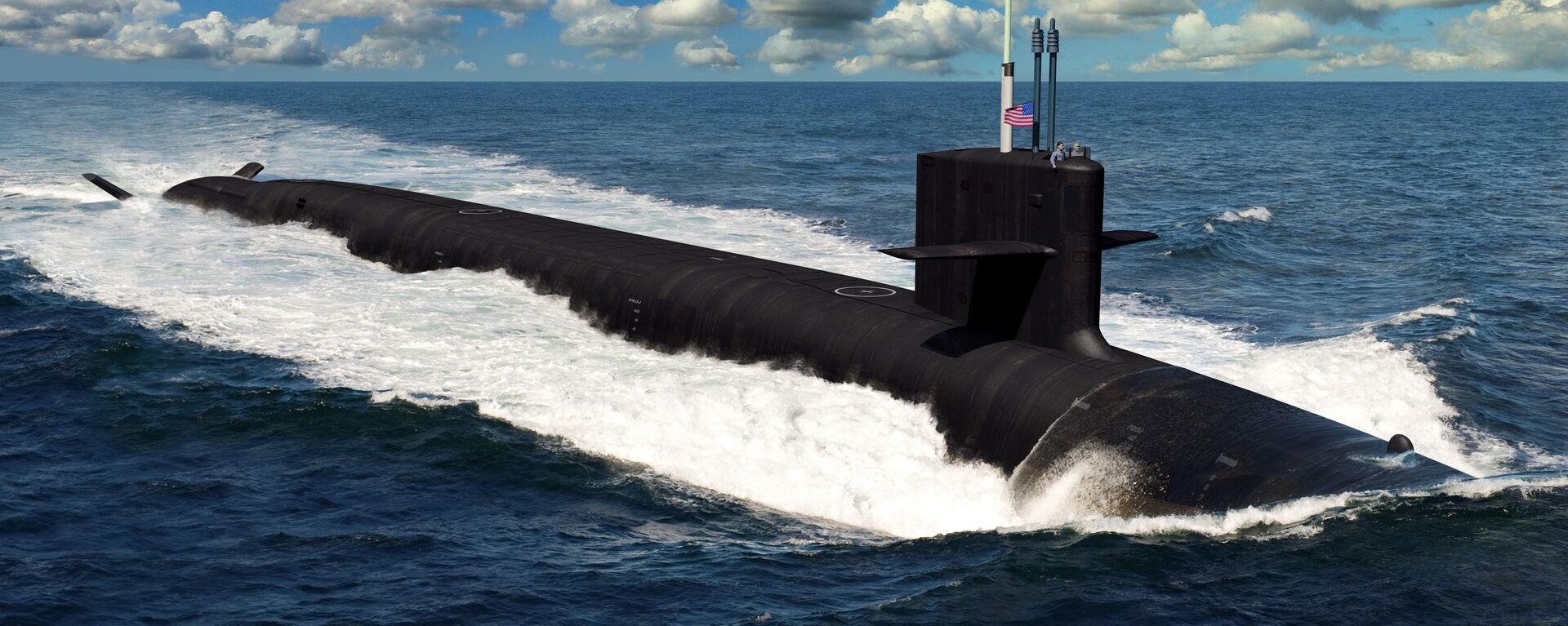
8 February 2020, 17:01 GMT
How Many Cruise Missile Subs Does the US Have?
In addition to its SSBN fleet, the US Navy also operates four modified Ohio-class cruise missile submarines (SSGNs) – the USS Ohio, USS Michigan, USS Georgia, and USS Florida. The boats were converted into SSGNs in the 2000s, fitted with vertical launch systems which enable them to carry dozens of Tomahawk cruise missiles. Each of the converted boats’ 22 tubes carries up to seven Tomahawks, or 154 cruise missiles in every sub. The SSGNs can also carry special operations (spec ops) personnel for stealthy missions on distant shores.
The Tomahawks on board the four Ohio-class boats can be armed with both conventional explosives and nuclear-tipped warheads, with the latter carrying a yield of between five and 150 kilotons. The Pentagon first used a converted Ohio-class SSGN in combat during the US war of aggression in Libya –with the USS Florida raining dozens of conventional Tomahawk missiles down on targets in the country in 2011 during Operation Odyssey Dawn, playing its small part in turning the once prosperous North African nation into a failed state.
How Many Nuclear-Powered Attack Subs Does the US Have?
In addition to its strategic nuke-launching subs and cruise missile-equipped SSGNs, the United States has over 50 fast attack subs – all of them powered by nuclear reactors. These include 29 Los Angeles-class subs, built between the early 1970s and 1996, and fitted with Mk 48 torpedoes, Harpoon anti-ship missiles, and Tomahawk land attack missiles, 22 newer Virginia-class subs, which began to be commissioned in the mid-2000s, and carrying the same armament, and three boats of the Seawolf-class, a nimble, $3 billion apiece sub, also armed with the same weapons. The Navy planned to build 29 Seawolf-class boats when construction began in the late 1980s, but scrapped 26 of them due to exorbitant costs (for comparison, a single Los Angeles-class cost about $1.61 billion in inflation-adjusted dollars).
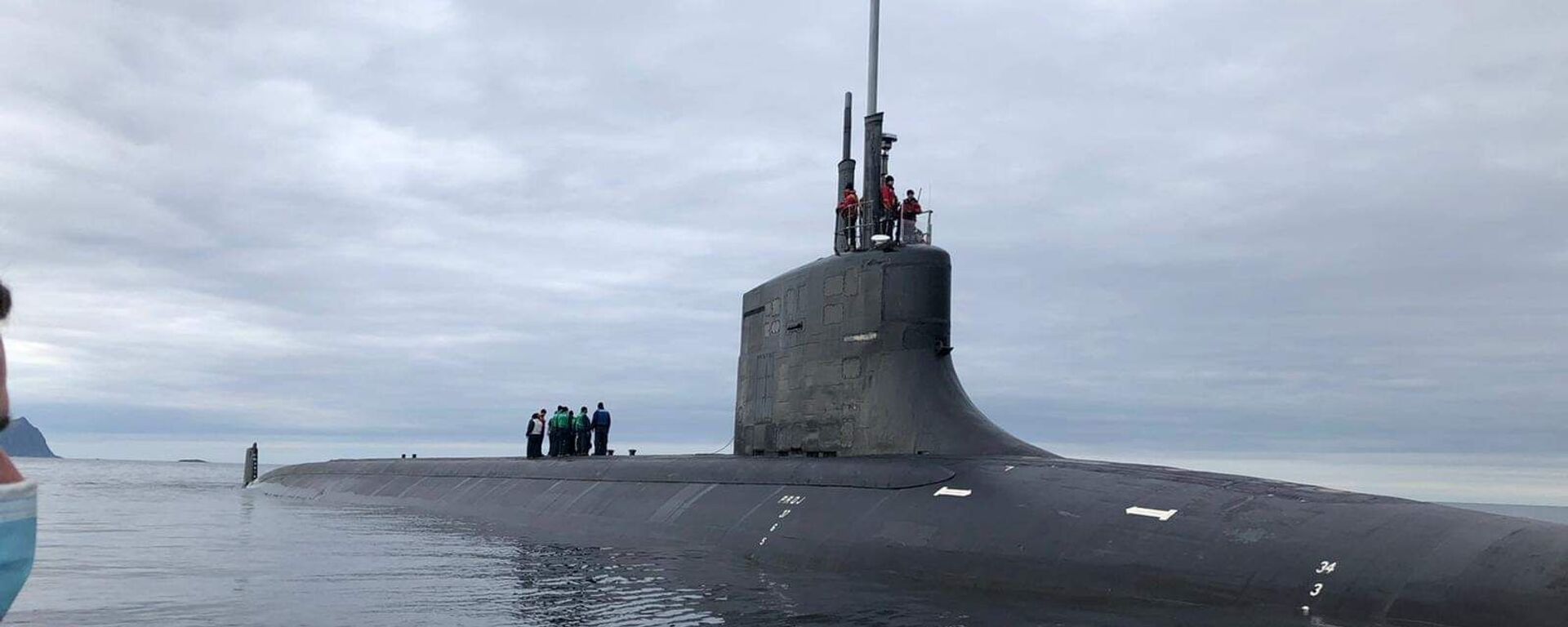
21 September 2020, 22:32 GMT
What’s Next for the US Nuclear Submarine Fleet?
The Pentagon received nearly $100 million for R&D work on its next-generation nuclear attack submarine, known as the SSN(X) program, in the 2022 budget, and has requested $237 million in additional funding in fiscal year 2023. So far, the Navy has been tight-lipped about what the new sub might look like, or its capabilities,
except to promise that it will have improved speed and stealth characteristics, “and carry a larger inventory of weapons and diverse payloads” compared with its predecessors. Construction of the SSN(X) is expected to start in the early 2030s, with the first boats set to come online in 2043.
As for missile-carrying boomer subs, construction of the Ohio-class’ replacement – the Columbia-class, is already under way. The $9.15 billion a piece subs are set to start replacing Ohio-class boats in the late 2020s. Each will carry 16 Trident IIs. The US plans to build a dozen Columbia-class subs total, with all 12 expected to be completed by the early 2040s, and to serve until 2085, if we make it that far.
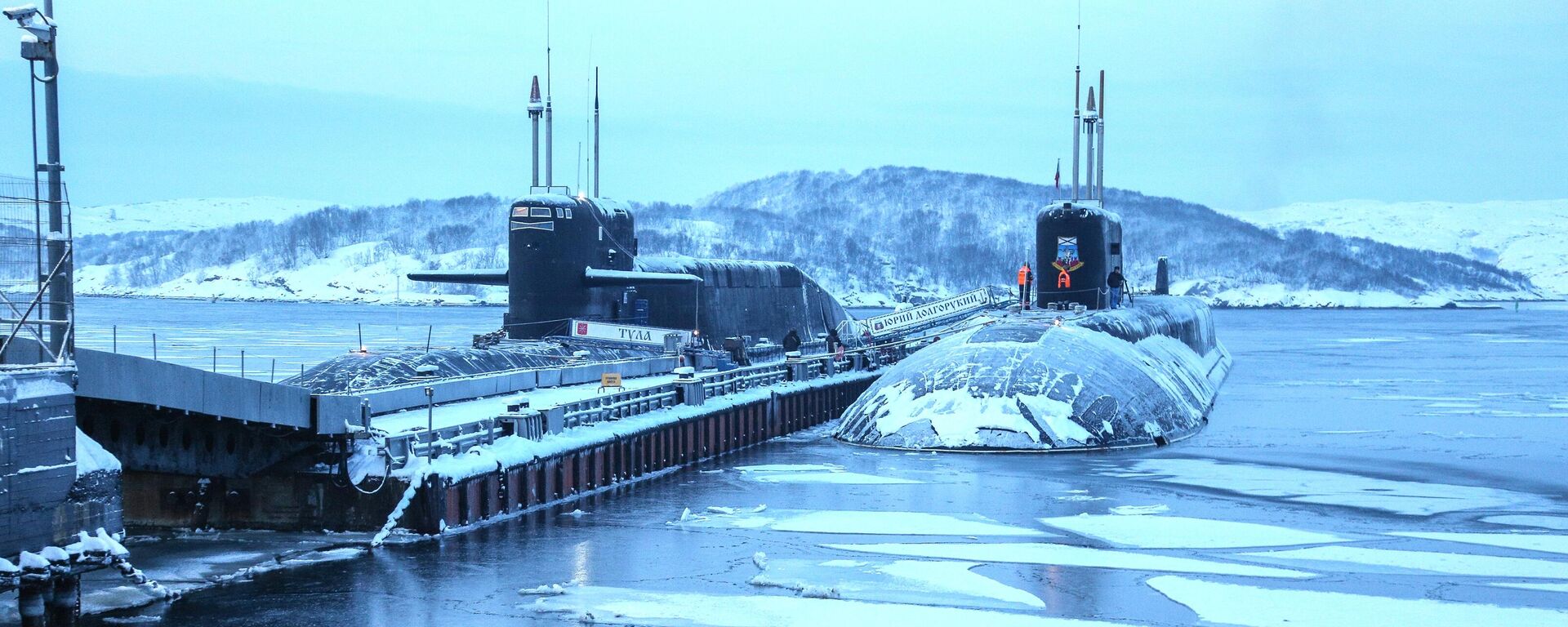
5 December 2022, 06:41 GMT
